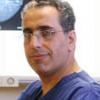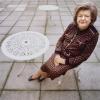This article discusses the different types of treatment for breast cancer and explains how breast cancer treatment is tailored.
Breast Cancer Treatments; Contents
-
Introduction to treating breast cancer

- Tailoring treatment for breast cancer
- Surgery for breast cancer
- Reducing the risk of the breast cancer recurring
- Has the cancer spread?
- Laboratory analysis following surgery for breast cancer
- Radiotherapy treatment for breast cancer
- Endocrine treatment for breast cancer
- Chemotherapy for breast cancer
- Molecular treatments for breast cancer
- Pre-operative chemotherapy for breast cancer
- The “next big thing” for breast cancer treatment
Introduction
To be told you have breast cancer is always a huge shock. Before we consider some of the treatments available I want to make the important point that the treatment of breast cancer has improved dramatically over the years. In the 1970s only 50% of people with breast cancer survived for 5 years. In the best units that figure is now around 90%. Similarly the 10 year survival rate was only 40% in the 70s and it is now 80%, with a twenty year survival rate of nearly 70%. The fundamental fact is that most people will no longer die from their breast cancer; and the treatments continue to improve.
Tailoring treatment for breast cancer
The treatment for breast cancer is tailored to each individual as much as possible, so there really isn’t any such thing as a “usual” treatment. There are, however, four basic types of treatment to consider: surgery, radiotherapy, endocrine treatment (such as Tamoxifen or other, similar, tablets) and chemotherapy. I will go through each in turn and then also discuss some of the newer, molecular, treatments that are becoming available, as well as looking to the future to see what might happen in the years to come.
Surgery for breast cancer

Reducing the risk of the breast cancer recurring
Many surgeons will now also take extra “shavings” after the cancer is removed. This is to make sure that there is a good margin of normal tissue around the cancer so that it is completely removed. This reduces the chance of the cancer coming back in the breast. In some cases, when the lump is analysed down the microscope it seems to go further than expected and some people will need another operation to remove more tissue to get a safe margin of normal tissue. If the surgeon takes these cavity shavings at the time of the initial operation the proportion of people needing another operation is around 5%. If the surgeon does not take shavings up to 20% of people may need more surgery.
 If the lump is relatively large compared with the size of the breast then it may be necessary to remove the whole breast to make sure the cancer is completely removed (a mastectomy). In some people who have a large cancer it is possible to shrink it before surgery so that breast conserving surgery becomes possible and I will come back to that later. If a mastectomy is needed then it is possible to rebuild the breast at the same time (immediate reconstruction). Some breast surgeons will do the mastectomy and reconstruction on their own. In many cases a breast surgeon and a plastic surgeon will work together, one helping the other with their part of the operation. This can decrease the time spent under anaesthetic. There are many different ways of performing a breast reconstruction. Sometimes a simple implant can be used, in other cases muscle can be taken from the back (a latissimus dorsi flap) or tissue can be taken from the tummy, or from other areas, to form a new breast. Breast reconstruction can also be done at a later date (a delayed reconstruction) if that is what you want.
If the lump is relatively large compared with the size of the breast then it may be necessary to remove the whole breast to make sure the cancer is completely removed (a mastectomy). In some people who have a large cancer it is possible to shrink it before surgery so that breast conserving surgery becomes possible and I will come back to that later. If a mastectomy is needed then it is possible to rebuild the breast at the same time (immediate reconstruction). Some breast surgeons will do the mastectomy and reconstruction on their own. In many cases a breast surgeon and a plastic surgeon will work together, one helping the other with their part of the operation. This can decrease the time spent under anaesthetic. There are many different ways of performing a breast reconstruction. Sometimes a simple implant can be used, in other cases muscle can be taken from the back (a latissimus dorsi flap) or tissue can be taken from the tummy, or from other areas, to form a new breast. Breast reconstruction can also be done at a later date (a delayed reconstruction) if that is what you want.
Has the cancer spread?
.jpg)
All patients having surgery to the breast will also have some of their armpit glands (lymph nodes) removed as well. The aim is to see whether the cancer may have started to spread. In all cases the armpit glands will be looked at with an ultrasound scan before surgery and if any abnormal looking glands are seen a biopsy will be taken. If this shows cancer cells in the arm pit glands (and this is actually uncommon and occurs in only about 30% of cases) then a “full axillary dissection” will be carried out to make sure all of the abnormal glands are removed. The aim would be to get at least 10 glands. If the glands look normal then a sentinel lymph node biopsy will be done. The aim is to identify the glands to which the cancer would have spread, if it had spread (the “sentinel nodes”), and to remove only these glands. If these glands do not show any signs of cancer cells then it can be considered that it has not spread and no more glands need to be removed. In many cases these sentinel nodes can be analysed during the initial operation. If however they unexpectedly contain cancer cells then it allows the surgeon to remove more glands at the initial operation rather than having to wait at least a week for the results and then having to plan a second operation for a later date, which can then delay other treatments that may be needed.
Laboratory analysis following surgery for breast cancer
Following an operation all of the samples are thoroughly analysed in the laboratory. The pathologist will work out the type of breast cancer (there are several different sorts) and its size as well as its grade (a measure of how quickly it seems to growing).
See also - Breast Cancer - Gene Testing
The pathology laboratory diagnostic team will find out if any lymph nodes have been involved. They will measure the thickness of the surrounding normal tissue (the clearance) and look to see if there is any sign of the cancer getting into any blood vessels. They can also test to see whether the cancer needs oestrogen hormone to grow (about 66% do) and they can also test to see if it sensitive to some other drugs. With all this information it is possible to work out the risk of further problems. Many oncologists use computer based and on-line assessment tools to help them work out the potential benefits of the different forms of treatment for each individual so that the pros and cons can be discussed fully before deciding on what treatment is needed. Extra treatment given after surgery is called adjuvant treatment.
Radiotherapy treatment for breast cancer
The first type of adjuvant treatment to consider is radiotherapy. If you have breast conserving treatment alone then the chance of the cancer coming back in that breast can be as high as 20%. If you have radiotherapy after surgery then this falls to under 5%. You can see then that radiotherapy is a very important part of breast cancer treatment.
 The treatment is given as a series of short sessions, each lasting 10-15 minutes. The treatment can go on for 3-6 weeks and is given from Monday to Friday with a break at the weekend. External radiotherapy, such as this, does not make you radioactive and it is quite safe to continue to be with other people. It is also sometimes used after a mastectomy if the cancer has a high risk of recurring and it may be used in the armpit if only a few glands have been removed and they are found to contain cancer cells. If a full axillary dissection has been done radiotherapy is rarely needed to the armpit.
The treatment is given as a series of short sessions, each lasting 10-15 minutes. The treatment can go on for 3-6 weeks and is given from Monday to Friday with a break at the weekend. External radiotherapy, such as this, does not make you radioactive and it is quite safe to continue to be with other people. It is also sometimes used after a mastectomy if the cancer has a high risk of recurring and it may be used in the armpit if only a few glands have been removed and they are found to contain cancer cells. If a full axillary dissection has been done radiotherapy is rarely needed to the armpit.
Radiotherapy can cause side effects such as skin soreness and tiredness but these will usually improve when your treatment has finished.
Endocrine treatment for breast cancer
 The next type of adjuvant therapy is endocrine (sometimes also called hormonal) therapy. As we have seen 66% of breast cancers need hormones (specifically the female hormone oestrogen) to grow (they are called oestrogen receptor positive cancers). In these cases blocking the effects of oestrogen or preventing the body from making oestrogen can reduce the chances of the cancer coming back. If you have not yet been through the menopause then Tamoxifen will be used. This works by stopping the cancer cells from taking up oestrogen. Tamoxifen is an “oestrogen receptor blocker”.
The next type of adjuvant therapy is endocrine (sometimes also called hormonal) therapy. As we have seen 66% of breast cancers need hormones (specifically the female hormone oestrogen) to grow (they are called oestrogen receptor positive cancers). In these cases blocking the effects of oestrogen or preventing the body from making oestrogen can reduce the chances of the cancer coming back. If you have not yet been through the menopause then Tamoxifen will be used. This works by stopping the cancer cells from taking up oestrogen. Tamoxifen is an “oestrogen receptor blocker”.
In some cases a drug can also be given to stop the ovaries from working as well (this drug is called goserelin or Zoladex). If you have already been through the menopause then a different tablet can be used. The most common one used now is letrozole (also known as Femara). This works by preventing the body from making any oestrogen. This type of drug is known as an aromatase inhibitor or AI and they do not work in premenopausal women. Whatever kind of endocrine tablet you have you will normally have a single tablet a day for 5 years. The most common side effect of Tamoxifen is weight gain whilst the aromatase inhibitors can make the joints and muscles ache. Having said that, most women have few, if any, side effects and they tolerate the tablets very well.
Chemotherapy for breast cancer

Where indicated (see unnecessary chemotherapy), the final one of our main four treatments is chemotherapy. This is the use of more powerful drugs to kill the cancer cells. These drugs work by killing cells that are dividing, and as cancer cells tend to be dividing more quickly than normal cells they are more likely to be killed. However, as normal body cells can be dividing too they can also be affected, leading to side effects.
Chemotherapy is given in “cycles”. The drugs are given either into the vein or as tablets and can be given on an outpatient basis or even at home. A treatment may take a few hours. There will then be a period of a few (perhaps three) weeks before the next treatment. This gives the body time to recover from a cycle before the next one. A course of chemotherapy is often 6 cycles, but it can be more. You can see that a complete course may take several months. There are many different sorts of drugs that are used and several different drugs will usually be given in combination to produce a better effect.
FEC, CMF or AC?
Commonly used drugs include epirubicin, flurouracil and docetaxel. Different combinations have different names, such as FEC, CMF or AC depending on the drugs used. Although the side effects can be unpleasant they are often well controlled with other tablets. Side effects include tiredness, nausea and vomiting, sore mouth, hair loss and effects on the nerves of the hands and feet (peripheral neuropathy). Different people will react to chemotherapy in different ways. Some people may have very few side effects whilst others feel much worse. Almost all of the side effects are short lived and get better when the treatment has finished.
Molecular treatments for breast cancer
 Herceptin is another type of chemotherapy that comes under the “molecular treatments” that I mentioned at the beginning. Cancer cells have all sorts of molecules on their surface. Many of these are what are called “receptors”. They pick up molecules from the blood or the fluid around the cells and as they do so they get activated or turned on. Once a receptor is turned on in this way it sends a message into the cell where it can produce various effects such as telling the cell to grow and divide. In about one third of cancer cells a receptor called the epidermal growth factor receptor is turned on by mistake, allowing the cell to grow in an uncontrolled way. Herceptin sticks to this abnormally active receptor and turns it off and kills the cancer cell. Tamoxifen is also a type of molecular treatment as it acts on the oestrogen receptor on the cell in a similar way. A newer class of molecular treatments involves drugs called PARP inhibitors. These may be useful in breast cancers that are not sensitive to Tamoxifen or Herceptin or in those cancers due to an abnormal gene that runs in the family (the so called breast cancer genes, BRCA1 or BRCA2). Much research is going on to try and identify more of these types of treatment for breast cancer and I will come back to where this may lead later.
Herceptin is another type of chemotherapy that comes under the “molecular treatments” that I mentioned at the beginning. Cancer cells have all sorts of molecules on their surface. Many of these are what are called “receptors”. They pick up molecules from the blood or the fluid around the cells and as they do so they get activated or turned on. Once a receptor is turned on in this way it sends a message into the cell where it can produce various effects such as telling the cell to grow and divide. In about one third of cancer cells a receptor called the epidermal growth factor receptor is turned on by mistake, allowing the cell to grow in an uncontrolled way. Herceptin sticks to this abnormally active receptor and turns it off and kills the cancer cell. Tamoxifen is also a type of molecular treatment as it acts on the oestrogen receptor on the cell in a similar way. A newer class of molecular treatments involves drugs called PARP inhibitors. These may be useful in breast cancers that are not sensitive to Tamoxifen or Herceptin or in those cancers due to an abnormal gene that runs in the family (the so called breast cancer genes, BRCA1 or BRCA2). Much research is going on to try and identify more of these types of treatment for breast cancer and I will come back to where this may lead later.
Now, not everyone will need all of these treatments and which ones you need will depend on the characteristics of your particular cancer and the risk of it coming back. For example, if your cancer is not sensitive to oestrogen then you will not need any endocrine, or hormonal, treatment. If you have other potentially serious medical problems that may make a general anaesthetic dangerous then surgery may not be appropriate (although some lumps can be removed with local anesthetic). In this case you may only have endocrine treatment or perhaps radiotherapy.
Pre-operative chemotherapy for breast cancer
As I mentioned before it is possible to use chemotherapy before surgery. This is sometimes called neo-adjuvant therapy, or simply pre-operative chemotherapy. The aim is to shrink a large cancer, which would normally require a mastectomy, to a smaller lump which can be treated by wide local excision. The advantage of this is that you can actually see the chemotherapy work as the lump gets smaller and you know that you are having the correct combination of drugs. Sometimes, if the lump does not shrink, you will be given a different combination of drugs. Occasionally chemotherapy will not shrink the lump and a mastectomy will still be needed, but usually this works very well and sometimes the cancer can be too small to feel after the chemotherapy has finished. For this reason you will usually have a tiny metal marker clip placed into the cancer after the first or second cycle of chemotherapy. This is done with local anaesthetic and usually using an ultrasound scanner. If the cancer then becomes too small to feel, or even to see on a mammogram it is still possible, because of the clip, to find and remove the area of the breast that the cancer came from. The area may need to be localised in a similar way to small cancers that are detected on mammogram x-rays, using a guide-wire.
The “next big thing” for breast cancer treatment
 So, where are all these treatments leading and what will be the “next big thing”? I think that surgery and radiotherapy will remain an important part of breast cancer treatment for many years yet. The advances will come in how we decide on which particular drugs are useful for each cancer. We have already started this in a limited way with Tamoxifen and then Herceptin and now the PARP inhibitors. But we will be able to take this much further. It is already possible to analyse a breast cancer to look for a wide range of abnormal genes. In the future we should be able to work out which particular drugs are required for each abnormal gene we find so that instead of simply knowing that chemotherapy is needed we will be able to specify exactly which drugs should be used for each individual cancer. In addition, finding abnormalities that appear across a range of different cancers will allow new drugs to be developed.
So, where are all these treatments leading and what will be the “next big thing”? I think that surgery and radiotherapy will remain an important part of breast cancer treatment for many years yet. The advances will come in how we decide on which particular drugs are useful for each cancer. We have already started this in a limited way with Tamoxifen and then Herceptin and now the PARP inhibitors. But we will be able to take this much further. It is already possible to analyse a breast cancer to look for a wide range of abnormal genes. In the future we should be able to work out which particular drugs are required for each abnormal gene we find so that instead of simply knowing that chemotherapy is needed we will be able to specify exactly which drugs should be used for each individual cancer. In addition, finding abnormalities that appear across a range of different cancers will allow new drugs to be developed.
The really interesting question is whether we will ever find a cause for breast cancer. This is much more difficult. It seems that breast cancer is “multifactorial”. This means that many different things have to happen over a period of time for a breast cancer to develop. There is not a single cause. While the causes remain obscure, the treatments continue to improve and we can be optimistic about further developments in the future.
For further information on the author of this article, Consultant Breast Surgeon, Mr Simon Marsh, please click here.
The time of a woman’s life when her ovaries stop releasing an egg (ovum) on a monthly cycle, and her periods cease
Full medical glossary







